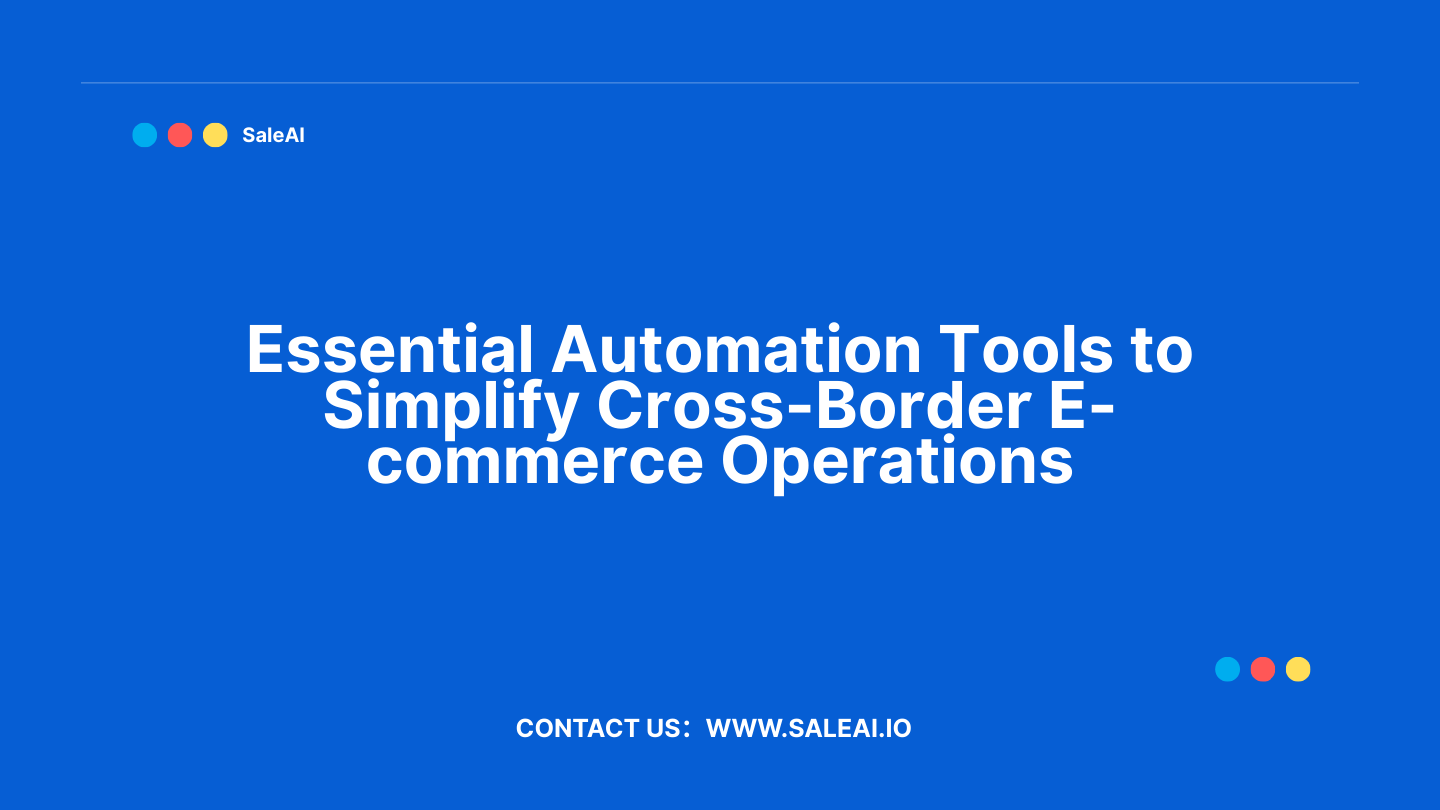Introduction
Cross-border e-commerce is a booming industry, offering businesses the opportunity to expand globally. However, managing operations across multiple regions, languages, and platforms can be overwhelming. Automation tools have become a game-changer, enabling sellers to streamline processes, reduce errors, and scale efficiently. This article explores how cross-border e-commerce automation tools, such as those offered by SaleAI, can help businesses optimize their global operations.
Key Features of Cross-Border E-commerce Automation Tools
a. Multi-Language Customer Support
Managing customer inquiries in different languages is one of the biggest challenges for cross-border sellers. Automation tools provide:
- AI-Powered Chatbots: Handle customer queries 24/7.
- Language Localization: Communicate in buyers’ native languages, improving trust and satisfaction.
- Automated FAQ Responses: Quickly resolve common questions like shipping timelines or return policies.
Example: A customer from Spain asks about shipment tracking. The chatbot responds in Spanish with accurate, real-time updates.
b. Automated Order Management
Manual order processing is time-consuming and prone to errors. Automation tools simplify this by:
- Real-Time Order Syncing: Automatically update inventory and order statuses across platforms like Amazon, eBay, and Shopify.
- Error-Free Processing: Reduce human errors in data entry and ensure smooth transactions.
- Bulk Order Management: Handle thousands of orders during peak seasons effortlessly.
Benefit: Save time and maintain operational accuracy, even during sales surges.
c. Logistics and Shipping Automation
Efficient logistics management is critical for cross-border e-commerce. Automation tools offer:
- Real-Time Shipment Tracking: Automatically update customers on their package status.
- Carrier Integration: Sync with global logistics providers for seamless shipping coordination.
- Cost Optimization: Compare shipping rates and choose the most cost-effective options.
Example: Automatically send tracking updates via email or messaging apps, reducing customer inquiries about delivery times.
d. Marketing Automation for Global Reach
Reaching international customers requires personalized and scalable marketing strategies. Automation tools enable:
- Targeted Campaigns: Segment customers by region, purchase history, and preferences.
- Multi-Channel Outreach: Automate marketing efforts across email, WhatsApp, and social media platforms.
- Performance Analytics: Track campaign success and refine strategies in real-time.
Outcome: Boost global sales with minimal manual effort.
e. Data-Driven Insights for Better Decision-Making
Automation tools collect and analyze data to provide actionable insights, such as:
- Sales Trends: Identify which products perform best in specific regions.
- Customer Behavior: Understand buying patterns to tailor marketing strategies.
- Operational Efficiency: Highlight areas where processes can be optimized.
Example: Use insights to adjust pricing strategies for different markets based on demand and competition.
Benefits of Cross-Border E-commerce Automation Tools
- Time Efficiency: Automate repetitive tasks, allowing sellers to focus on growth strategies.
- Error Reduction: Minimize mistakes in order processing, inventory updates, and customer communication.
- Scalability: Manage increasing order volumes without additional resources.
- Customer Satisfaction: Provide faster, more personalized service to enhance the shopping experience.
- Cost Savings: Optimize shipping, marketing, and operational processes to reduce expenses.
Practical Applications
For Small and Medium Businesses (SMBs):
- Expand to new markets without hiring additional staff.
- Leverage automation for efficient operations at a lower cost.
For Large Enterprises:
- Streamline multi-platform operations and manage high order volumes.
- Use data insights to refine global strategies.
For Dropshippers:
- Automate supplier coordination and order fulfillment.
- Provide real-time updates to customers without manual follow-ups.
Best Practices for Using Automation Tools in Cross-Border E-commerce
- Define Your Goals: Identify which processes need automation (e.g., order management, customer support).
- Choose the Right Tools: Select tools that integrate seamlessly with your existing platforms.
- Monitor Performance: Use analytics to track the effectiveness of automation and make adjustments.
- Localize Your Approach: Tailor customer communication and marketing strategies to regional preferences.
Conclusion
Cross-border e-commerce automation tools are essential for businesses looking to scale globally while maintaining efficiency and accuracy. By automating key processes like customer support, order management, logistics, and marketing, sellers can save time, reduce costs, and improve customer satisfaction. SaleAI’s suite of automation tools offers comprehensive solutions to help businesses thrive in the competitive global market.




